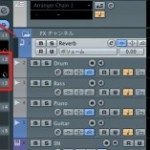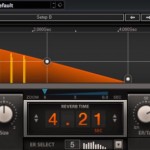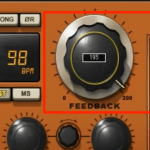立体的なMIXを作るリバーブテク!!
奥が深いリバーブ!!
リバーブは特に効果が分かりやすいエフェクターで、
誰でも簡単にかけることができるのですが、その分非常に奥が深い!!
上手く使わないと、お風呂場の様になったり、楽曲の印象がボヤけてしまいます。
わかってはいるけど、その解決方法がわからないという、
悩みを持っている方も多いのではないでしょうか?
ちょっとしたテクを取り入れるだけで、
あなたのイメージに近い、奥行きを表現することができます。
空間再現6つのテクニック!!
ここでは空間エフェクトをコントロールするテクニックを6つご紹介します。
1_「センドを使って1つのリバーブを共有する」
リバーブは各トラックごとにかけるのではなく、リバーブ専用の「AUXトラック」を作り、
そのリバーブトラックを各トラックで共有するといった使い方が基本となります。
その方法は僕のブログに記載していますので、そちらご覧ください。
DAW別 センドを使って1つのリバーブを共有記事
2_「部屋の広さが違うリバーブを組み合わせる」
これは「テクニック1」の応用です。リバーブ専用のトラックを複数作り、
それを組み合わせる事で絶妙な空間を演出できます。
例えば「リバーブトラック1」には大きめなホールリバーブ。
「リバーブトラック2」にはルーム系の狭いリバーブ。
「リバーブトラック3」にはプレートリバーブ。などキャラクターが異なるものを用意し、
リバーブをかけたいトラックの方で、センド量を調整して好みの奥行き感を出します。
その効果は絶大です!!
それぞれの特徴が組み合わさり、複雑な残響を表現する事ができます。
3_「ベース、バスドラムにはリバーブをかけすぎない」
リバーブは特性上、低域の残響がかさばってしまいます。
ベース、バスドラムにリバーブをかけすぎると、楽曲の芯がぼやけてしまいます。
ですので、全くリバーブをかけない、
もしくは、ルームリバーブを薄くかける位に留めておきます。
またSE的な効果を狙い、キック1発だけリバーブを深くするという手法もありますが、
メインとなる部分はやはりリバーブをかけないのが基本になります。
4_「リバーブトラックにEQをかけて低域を削る」
「テクニック3」の説明に通じますが、各トラックにリバーブをかけていくと、
どうしても低域が膨らむ傾向にあります。
ボーカルのリバーブを深くしたいが、これ以上深くすると、お風呂場になってしまう。
そんな時によく使うのが、リバーブトラックにEQをかけて低域を削るという方法です。
全体的にすっきりした印象になり、リバーブは深いのに、嫌な残り方がしません。
削る低域範囲は楽曲によって大きく変わるので、色々と試して適正値を探ってみてください。
5_「リバーブが深いトラック、浅いトラックをしっかり分ける」
全体的にリバーブが深い楽曲を作りたい。
そんな時、全てのトラックを深めに設定してしまっては、その効果が薄れてしまいます。
その中に1つ距離が近い浅めのトラックを用意する事で、相対的に他トラックの
リバーブ感を強調できます。MIXは音量、エフェクト共に1つの基準を置き、
その基準から相対的に聴こえるという錯覚を利用して作業してみてください。
6_「リバーブ成分の定位にもこだわってみる」
通常、「センド&リターン」を使用した残響(リバーブ成分)は中央から鳴ります
例えばギタートラックのPANを完全に右に振り切った場合でも、
ギターの残響は中央から鳴るのです。
これにより
- 音像がぼやける
- リバーブ感が中央で飽和する
などの問題がでてきてしまいます。
これらの問題を解決するのが、「リバーブ成分のPAN設定」です。
DAWごとに操作が異なるため、DAWごとに分岐させて解説を行います。
DAW別 リバーブ成分のPANをコントロールする
以上、立体的なMIXを作る6つのリバーブテクでした。
これらのテクニックを活用することで、楽曲の印象がガラッと変わるはずです。
素晴らしいMIXを目指し、頑張ってください!
このような記事も読まれています
- CATEGORY:
- ミックス/マスタリング講座




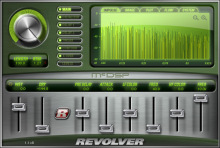



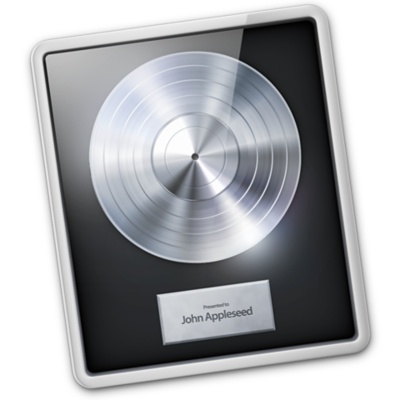 Logic
Logic Cubase
Cubase Ableton Live
Ableton Live StudioOne
StudioOne FL_Studio
FL_Studio
